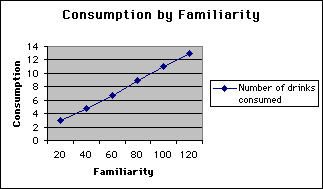Media Effects Research Lab - Research Archive
Advertising effects on alcohol consumption among college students
Student Researcher(s)
Jennifer Lange (B.A. Candidate);
Susan Pryor (B.A. Candidate);
Kandi Reed (B.A. Candidate);
Jennifer Risser (B.A. Candidate);
Faculty Supervisor
FOR A COMPLETE REPORT OF THIS RESEARCH, SEE:
Lange, J. G., Pryor, S. M., & Reed, K. M. (1998, April). Alcohol advertising and consumption. Paper presented at the 12th National Conference on Undergraduate Research (NCUR), Salisbury, MD.
INTRODUCTION
The issue of alcohol advertising and its relation to alcohol consumption has always been a topic of heated discussion and debate in the communications industry. The controversy has spread worldwide with advocates both for and against alcohol advertising. In addition to environmental influences, alcohol advertising is an important source through which many young people learn about alcohol. Past research has generally indicated either a positive correlation between advertising and consumption or has found no significant relationship between the two. This study seeks to extend research in this domain by examining the extent to which a person's familiarity with advertising affects their behavior patterns. Specifically, it seeks to determine the relationship between familiarity with alcohol advertising and amount and frequency of alcohol consumed.
METHOD
A total of one hundred respondents were selected from a systematic random sample. Each respondent was given a survey which had items pertaining to both amount and frequency of alcohol consumption. Upon completion of the survey, the respondents were asked to rate their familiarity with a series of 20 alcohol advertisements. The respondents were asked to specifically rank familiarity with the ad itself and not the product or campaign.
RESULTS
There was a significant postive correlation between ad familiarity and alcohol consumption such that respondents who were more familiar with the ads also consumed significantly more alcohol than those respondents who were not as familiar with the ads.

CONCLUSION
Overall, the results from this study suggest that there is a positive correlation between familiarity with alcohol advertisements and consumption of alcohol. The study also found some other interesting results. Specifically, those who watch more sports programs on television consumed more alcohol than those who did not watch as many sports programs. Also, gender seems to have a significant role as far as familiarity with alcohol ads is concerned, since the familiarity scores were significantly higher for males than for females.
For more details regarding the study contact
Dr. S. Shyam Sundar by e-mail at sss12@psu.edu or by telephone at (814) 865-2173

